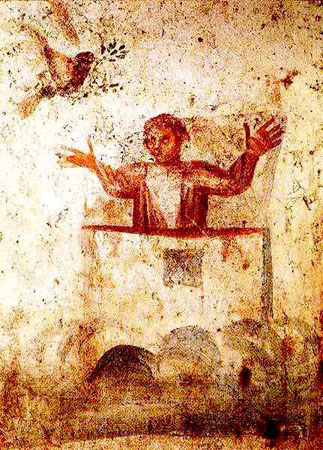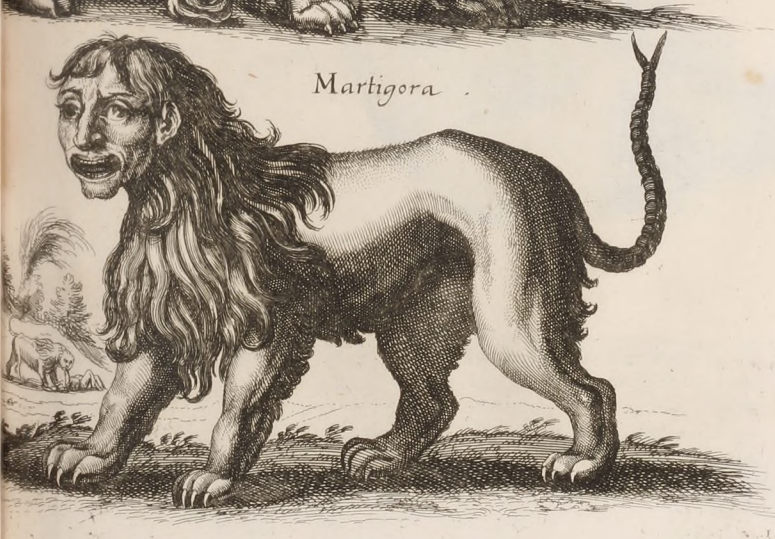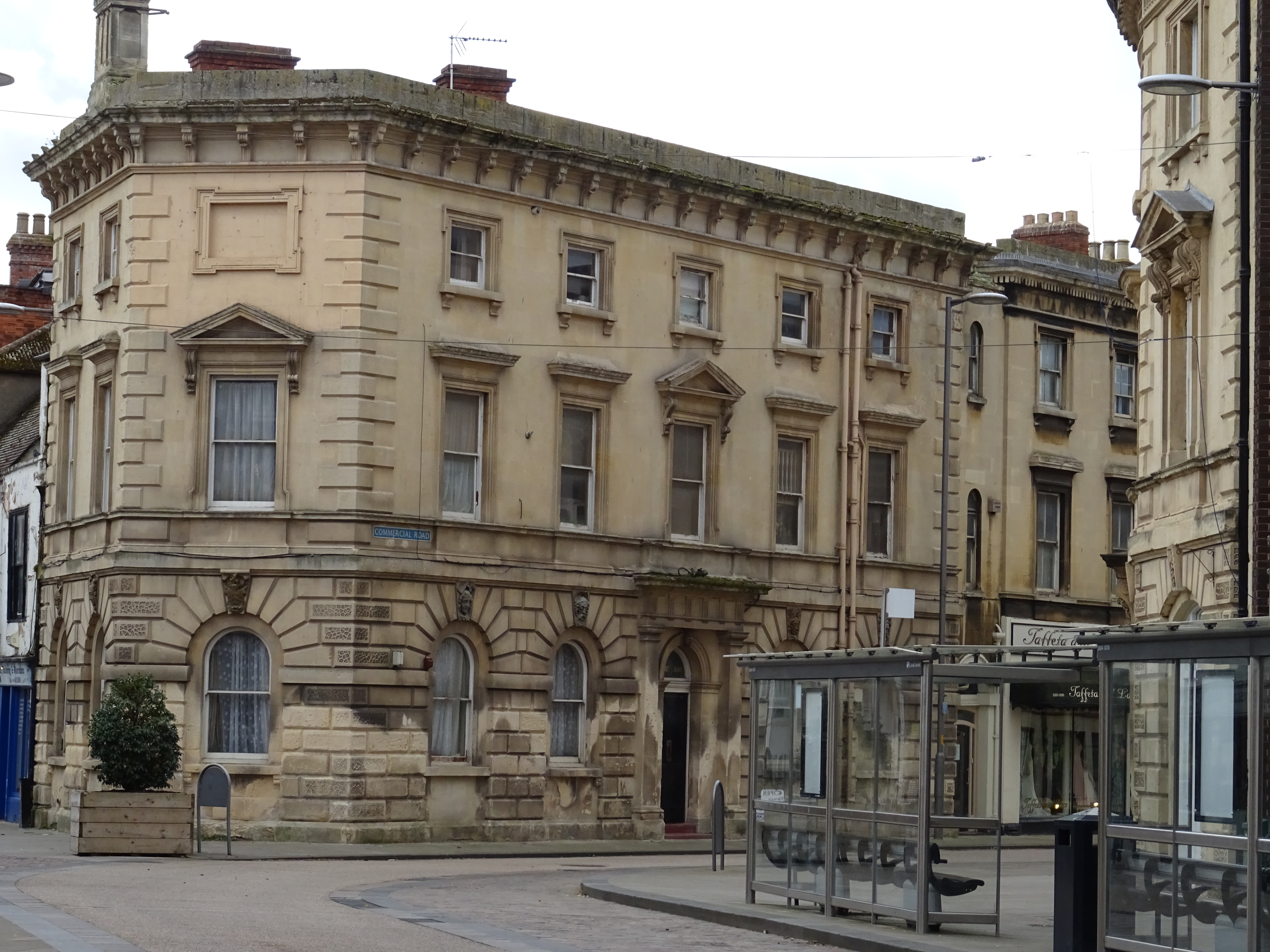|
Gloucester Tabula Set
The Gloucester tabula set is the earliest surviving board and complete set of counters for the game tabula, a tables game and possible predecessor of backgammon. Dating from the 11th or early 12th century, it is an example of Romanesque art. Discovered on the site of Gloucester Castle in 1983, in the English city of Gloucester, it is now on display in the Museum of Gloucester. Description The set was excavated at 28–32 Commercial Road, Gloucester, the site of a Norman castle.Darvill 1988, p. 1 One hundred and fifty pieces of carved bone were found at the bottom of a late-11th-century rubbish pit. These comprised a full set of 30 gaming pieces, and fragments of the board.Stewart 1984, p. 186 Some fragments are missing, and there is evidence of deliberate damage in four places. This suggests that the set was deliberately broken up elsewhere, and dumped in the pit. Archaeological evidence suggests that this happened c. 1070-1120, with study of the artistic characteristics of th ... [...More Info...] [...Related Items...] OR: [Wikipedia] [Google] [Baidu] |
Gloucester
Gloucester ( ) is a cathedral city and the county town of Gloucestershire in the South West of England. Gloucester lies on the River Severn, between the Cotswolds to the east and the Forest of Dean to the west, east of Monmouth and east of the border with Wales. Including suburban areas, Gloucester has a population of around 132,000. It is a port, linked via the Gloucester and Sharpness Canal to the Severn Estuary. Gloucester was founded by the Romans and became an important city and '' colony'' in AD 97 under Emperor Nerva as '' Colonia Glevum Nervensis''. It was granted its first charter in 1155 by Henry II. In 1216, Henry III, aged only nine years, was crowned with a gilded iron ring in the Chapter House of Gloucester Cathedral. Gloucester's significance in the Middle Ages is underlined by the fact that it had a number of monastic establishments, including: St Peter's Abbey founded in 679 (later Gloucester Cathedral), the nearby St Oswald's Priory, Glo ... [...More Info...] [...Related Items...] OR: [Wikipedia] [Google] [Baidu] |
Obelisk
An obelisk (; from grc, ὀβελίσκος ; diminutive of ''obelos'', " spit, nail, pointed pillar") is a tall, four-sided, narrow tapering monument which ends in a pyramid-like shape or pyramidion at the top. Originally constructed by Ancient Egyptians and called ''tekhenu'', the Greeks used the Greek term to describe them, and this word passed into Latin and ultimately English. Ancient obelisks are monolithic; they consist of a single stone. Most modern obelisks are made of several stones. Ancient obelisks Egyptian Obelisks were prominent in the architecture of the ancient Egyptians, and played a vital role in their religion placing them in pairs at the entrance of the temples. The word "obelisk" as used in English today is of Greek rather than Egyptian origin because Herodotus, the Greek traveler, was one of the first classical writers to describe the objects. A number of ancient Egyptian obelisks are known to have survived, plus the " Unfinished Obelisk" found part ... [...More Info...] [...Related Items...] OR: [Wikipedia] [Google] [Baidu] |
Historical Tables Games
History (derived ) is the systematic study and the documentation of the human activity. The time period of event before the invention of writing systems is considered prehistory. "History" is an umbrella term comprising past events as well as the memory, discovery, collection, organization, presentation, and interpretation of these events. Historians seek knowledge of the past using historical sources such as written documents, oral accounts, art and material artifacts, and ecological markers. History is not complete and still has debatable mysteries. History is also an academic discipline which uses narrative to describe, examine, question, and analyze past events, and investigate their patterns of cause and effect. Historians often debate which narrative best explains an event, as well as the significance of different causes and effects. Historians also debate the nature of history as an end in itself, as well as its usefulness to give perspective on the problems of the p ... [...More Info...] [...Related Items...] OR: [Wikipedia] [Google] [Baidu] |
Orans Posture
Orans (/ˈoː.rans/), a loanword from Medieval Latin ''ōrāns'' translated as ''one who is praying or pleading'', also orant or orante, as well as lifting up holy hands, is a posture or bodily attitude of prayer, usually standing, with the elbows close to the sides of the body and with the hands outstretched sideways, palms up. The orans posture of prayer has a Scriptural basis in : "I desire, then, that in every place the men should pray, lifting up holy hands without anger or argument" (NRSV). It was common in early Christianity and can frequently be seen in early Christian art, being advised by several early Church Fathers, who saw it as "the outline of the cross". In modern times, the orans position is still preserved in Oriental Orthodoxy, as when Coptic Christian believers pray the seven canonical hours of the Agpeya at fixed prayer times; The orans also occurs within parts of the Catholic, Oriental Orthodox, Eastern Orthodox, Lutheran, and Anglican liturgies, Pentecostal a ... [...More Info...] [...Related Items...] OR: [Wikipedia] [Google] [Baidu] |
Manticore
The manticore or mantichore (Latin: ''mantichōra''; reconstructed Old Persian: ; Modern fa, مردخوار ) is a Persian legendary creature similar to the Egyptian sphinx that proliferated in western European medieval art as well. It has the head of a human, the body of a lion and a tail of venomous spines similar to porcupine quills, while other depictions have it with the tail of a scorpion. There are some accounts that the spines can be shot like arrows, thus making the manticore a lethal predator. Name The term "manticore" descends via Latin ''mantichora'' from Ancient Greek (martikhórās)Cf. This in turn is a transliteration of an Old Persian compound word consisting of ''martīya'' 'man' and ''xuar-'' stem, 'to eat' (Mod. fa, ; ''mard'' + ; ''khurden''). The ultimate source of manticore was Ctesias, Greek physician of the Persian court during the Achaemenid dynasty, and is based on the testamants of his Persian-speaking informants who had travelled to India. Ctes ... [...More Info...] [...Related Items...] OR: [Wikipedia] [Google] [Baidu] |
Red Deer
The red deer (''Cervus elaphus'') is one of the largest deer species. A male red deer is called a stag or hart, and a female is called a hind. The red deer inhabits most of Europe, the Caucasus Mountains region, Anatolia, Iran, and parts of western Asia. It also inhabits the Atlas Mountains of Northern Africa; its early ancestors are thought to have crossed over to Morocco, then to Algeria, Libya and Tunisia via the Strait of Gibraltar, becoming the only species of true deer (Cervidae) to inhabit Africa. Red deer have been introduced to other areas, including Australia, New Zealand, the United States, Canada, Peru, Uruguay, Chile and Argentina. In many parts of the world, the meat (venison) from red deer is used as a food source. Red deer are ruminants, characterized by a four-chambered stomach. Genetics, Genetic evidence indicates that the red deer, as traditionally defined, is a species group, rather than a single species, though exactly how many species the group includes rem ... [...More Info...] [...Related Items...] OR: [Wikipedia] [Google] [Baidu] |
Lathe
A lathe () is a machine tool that rotates a workpiece about an axis of rotation to perform various operations such as cutting, sanding, knurling, drilling, deformation, facing, and turning, with tools that are applied to the workpiece to create an object with symmetry about that axis. Lathes are used in woodturning, metalworking, metal spinning, thermal spraying, parts reclamation, and glass-working. Lathes can be used to shape pottery, the best-known design being the Potter's wheel. Most suitably equipped metalworking lathes can also be used to produce most solids of revolution, plane surfaces and screw threads or helices. Ornamental lathes can produce three-dimensional solids of incredible complexity. The workpiece is usually held in place by either one or two ''centers'', at least one of which can typically be moved horizontally to accommodate varying workpiece lengths. Other work-holding methods include clamping the work about the axis of rotation using a chuck or col ... [...More Info...] [...Related Items...] OR: [Wikipedia] [Google] [Baidu] |
Interlace (art)
In the visual arts, interlace is a decorative element found in medieval art. In interlace, bands or portions of other motif (visual arts), motifs are looped, braided, and knotted in complex geometry, geometric patterns, often to fill a space. Interlacing is common in the Migration period art of Northern Europe, in the early medieval Insular art of Ireland and the British Isles, and Norse art of the Early Middle Ages, and in Islamic interlace patterns, Islamic art. Intricate braided and interlaced patterns, called ''plaits'' in British usage, first appeared in late Roman art in various parts of Europe, in mosaic floors and other media. Coptic art, Coptic manuscripts and textiles of 5th- and 6th-century Christian Egypt are decorated with broad-strand ribbon interlace ornament bearing a "striking resemblance" to the earliest types of knotwork found in the Insular art manuscripts of Ireland and the British Isles.Mitchell et al. 1977, p. 59 History and application Northern Europ ... [...More Info...] [...Related Items...] OR: [Wikipedia] [Google] [Baidu] |
Tables Games
Tables games are a class of board game that includes backgammon and which are played on a tables board, typically with two rows of 12 vertical markings called points. Players roll dice to determine the movement of pieces. Tables games are among the oldest known board games, and many different varieties are played throughout the world. They are called 'tables' games because the boards consist of four quadrants or 'tables'. The vast majority are race games, the tables board representing a linear race track with start and finish points, the aim being to be first to the finish line, but the characteristic features that distinguish tables games from other race games are that they are two-player games using a large number of pieces, usually fifteen per player. Tables games should not be confused with table games which are casino gambling games like roulette or blackjack. Name The word 'tables' is derived from the Latin ''tabula'' which primarily meant 'board' or 'plank', but also ... [...More Info...] [...Related Items...] OR: [Wikipedia] [Google] [Baidu] |
Museum Of Gloucester
The Museum of Gloucester in Brunswick Road is the main museum in the city of Gloucester, England. It was extensively renovated following a large National Heritage Lottery Fund grant, and reopened on Gloucester Day, 3 September 2011. In March 2016, the Museum rebranded itself; it used to be called the Gloucester City Museum & Art Gallery. Gloucester Life is a smaller museum in Westgate Street, dealing with the social history of Gloucestershire. Origins The museum opened on 12 March 1860 as a private venture in three rooms at ''The Black Swan'', provided rent-free by the poet Sydney Dobell. In 1896 the ''Corporation of the City of Gloucester'' took over the venture. The building The Victorian building, in the early Renaissance style, inspired by the work of T.G. Jackson, is Grade II listed by English Heritage. It was originally the ''Price Memorial Hall'' of the ''Gloucester Science and Art Society'', built for Margaret Price as a memorial to her husband William Edwin Price in ... [...More Info...] [...Related Items...] OR: [Wikipedia] [Google] [Baidu] |
Commercial Road, Gloucester
Commercial Road is located in the City of Gloucester, England. It runs from The Quay and Severn Road in the north to Kimbrose Way and Southgate Street in the south. It is joined by Barbican Road and Ladybellegate Street on the north side and by entrances to Gloucester Docks on the south side. On the north side on the corner with Barbican Road is the former Gloucester Prison and the former site of Blackfriars, Gloucester, Blackfriars on the corner with Ladybellegate Street. Listed buildings Commercial Road contains a number of listed buildings: North side * Gloucester Prison Governor's House * Black Swan Hotel South side * Dock Company Office * City Flour Mills * Soldiers of Gloucestershire Museum, formerly the Customs House * 27 and 29 Northgate Street * Navigation House * Criterion Hotel * 3 Commercial Road * 1 Commercial Road See also * Thomas Talbot (bottler) References External links Streets in Gloucester {{England-road-stub ... [...More Info...] [...Related Items...] OR: [Wikipedia] [Google] [Baidu] |
_drawn_and_engraved_under_the_direction_of_Edward_Wedlake_Brayley.jpg)

.jpg)






